new posts in all blogs
Viewing: Blog Posts Tagged with: Flaws, Most Recent at Top [Help]
Results 1 - 7 of 7
How to use this Page
You are viewing the most recent posts tagged with the words: Flaws in the JacketFlap blog reader. What is a tag? Think of a tag as a keyword or category label. Tags can both help you find posts on JacketFlap.com as well as provide an easy way for you to "remember" and classify posts for later recall. Try adding a tag yourself by clicking "Add a tag" below a post's header. Scroll down through the list of Recent Posts in the left column and click on a post title that sounds interesting. You can view all posts from a specific blog by clicking the Blog name in the right column, or you can click a 'More Posts from this Blog' link in any individual post.
Hi folks. I'm finishing my Chicken by Chicken series for the month of October. I write about my real challenges in the series. This week: Soul Wrapped in Cake and Doughnuts. On top of depression, anxiety, partial, and dylexia, I suffer from obesity. It is a daily battle. I hope my journey helps you find your way.
Yes, my soul is wrapped in cake and doughnuts. I have suffered from obesity since the birth of my third child. Gosh, you have no idea how difficult this is for me to write about. It's just a piece of cake. It's just a doughnut. Don't eat it. Ah, but that cake and doughnut is about that moment of pleasure in a life that has not had so many pleasures. Yes, I struggle with eating for emotional comfort. Like any addict, I hope to drown my sorrows in momentary pleasure. Obesity is a treatable disease and I'm working on it.
I don't have my obesity under control right now, but I haven't given up hope. I long to be well from this need to eat sugar. I live in a world that values the young and so called "beautiful." Thankfully, I have this fantastic understanding of beauty that keeps my chin up. My understanding was a gift. A photographer called Emerald England opened my eyes to the beauty of everything. I was at my highest weight of my life when I met her. I will tell you right now. I am the kind of person that everyone calls a beautiful heart.
I'd hired Emerald to take a headshot of me for my website. I apologized to her for asking her to use her incredible skills on someone like me. She looked at me in surprise and asked why. I told her my truth. I'm fat, dumpy,and gnome-like, and she takes pictures of beautiful people. She looked stunned and told me without hesitation, you are going to find out today that you are beautiful. I laughed and said OK. She took the shots and I went my way. When I received the pictures, I couldn't breathe.
Indeed, Emerald was right. I was beautiful, not just my heart, but the outside of me. Ever since that photography session, everyday, I stand in front of a mirror and speak the real truth to myself. You are beautiful, Molly. You have a health problem with food. It's complicated, but it doesn't lessen your beauty. I have an illness that has to be treated. This illness does not make less of a human being. That is someone else's problem.
So my soul is wrapped in cake and doughnuts. I'm working on it. Obesity is a tough disease to live with, but it is not an ugly-maker. You have value, whoever you are. Your flaws are part of your beauty. (My contemporary romance, Plumb Crazy, is really inspired by my journey with obesity. The main character, beautiful Elva, was another gift to me.) Here s a secret. Your so-called flaws will inspire your work if you let them.
I will back next week with my November series, Uplift.
Here is a doodle for you!

A quote for your pocket too!
The beauty of a woman is not in a facial mode but the true beauty in a woman is reflected in her soul. It is the caring that she lovingly gives the passion that she shows. The beauty of a woman grows with the passing years. Audrey HepburnI'm adding one of Emerald' England's pics, so you can see for yourself:
By:
Angela Ackerman,
on 7/7/2014
Blog:
The Bookshelf Muse
(
Login to Add to MyJacketFlap)
JacketFlap tags:
Uncategorized,
lessons,
Characters,
Dialogue,
Description,
fear,
Character Traits,
Emotion,
Flaws,
Add a tag
 One of the struggles that comes with writing is when a character feels vulnerable and so tries to hide their emotions as a result. Fear of emotional pain, a lack of trust in others, instinct, or protecting one’s reputation are all reasons he or she might repress what’s going on inside them. After all, people do this in real life, and so it makes sense that our characters will too. Protecting oneself from feeling exposed is as normal as it gets.
One of the struggles that comes with writing is when a character feels vulnerable and so tries to hide their emotions as a result. Fear of emotional pain, a lack of trust in others, instinct, or protecting one’s reputation are all reasons he or she might repress what’s going on inside them. After all, people do this in real life, and so it makes sense that our characters will too. Protecting oneself from feeling exposed is as normal as it gets.
But where does that leave writers who STILL have to show these hidden emotions to the reader (and possibly other characters in the scene)?
The answer is a “TELL”– a subtle, bodily response or micro gesture that a character has little or no control over.
No matter how hard we try, our bodies are emotional mirrors, and can give our true feelings away. We can force hands to unknot, fake nonchalance, smile when we don’t mean it and lie as needed. However, to the trained eye, TELLS will leak through: a rushed voice. An off-pitch laugh. Hands that fiddle and smooth. Self-soothing touches to comfort. Sweating.
For a story to have emotional range, our characters will naturally hide what they feel at some point, and when they do, the writer must be ready. Readers will be primed for an emotional response by the scene’s build up, and will be on the lookout for a character’s body language cues and tells.
Here is a list of possible TELLS that will convey to readers that more is going on with your Protagonist than it seems:
- A voice that breaks, drops or raises in pitch; a change in speech patterns
- Micro hesitations (delayed speech, throat clearing, slow reaction time) showing a lack of commitment
- A forced smile, laugh or verbally agreeing/disagreeing in a way that does not seem genuine
- Cancelling gestures (smiling but stepping back; saying No but reaching out, etc.)
- Hands that fiddle with items, clothing and jewellery
- Stiff posture and movements; remaining TOO still and composed
- Rushing (the flight instinct kicking in) or making excuses to leave or avoid a situation
- A lack of eye contact; purposefully ignoring someone or something
- Closed body posture (body shielding, arms crossing chest, using the hair to hide the face, etc.)
- Sweating or trembling, a tautness in the muscles or jaw line
- Smaller gestures of the emotion ‘leaking out’ (see The Emotion Thesaurus for ideas that match each emotion)
- Growing inanimate and contributing less to conversation
- Verbal responses that seem to have double meanings; sarcasm
- Attempting to intimidate others into dropping a subject
Overreacting to something said or done in jest
- Increasing one’s personal space ( withdrawing from a group, sitting alone, etc.)
- Tightness around the eyes or mouth (belying the strain of keeping emotion under wraps)
- Hiding one’s hands in some way
Sometimes a writer can let the character’s true thoughts leak out and this can help show the reader what’s really being felt. But this only works if the character happens to be the Point Of View Character. The rest of the time, it comes down to micro body language and body tells that are hard, if not impossible, to control.
Have you used any of these tells to show the reader or other characters in the scene that something is wrong? What tells do you notice most in real life as you read the body language of those around you? (These real life interactions can be gold mines for fresh body language cues to apply to your characters!)
TIP: For more inspiration on body language that will convey specific emotions, flip through The Emotion Thesaurus.
TIP 2.0: Becca has a great post on Hidden Emotions as well, and how “Acting Normal” might be the go-to expressive that gets hidden emotions across to the reader, while potentially leaving other characters in the dark.
The post Hidden Emotions: How To Tell Readers What Characters Don’t Want To Show appeared first on WRITERS HELPING WRITERS.
Super pleased to welcome Writing Coach MJ Bush today. I am a huge fan of her blog, Writing Geekery…if you don’t yet have this site on your writing resource roster, make it happen! (Trust me, you don’t want to miss any of her articles because they contain unique and valuable insight into character arc and story structure.)
MJ’s tackling REGRET, which is key to a well developed character arc. Regret can destroy a person, but it can also motivate, spurring a character to take action when they reach the point where fears, missed opportunities and poor choices lead to unbearable fulfillment and dissatisfaction. Great stuff here on how to use it in your hero’s arc, so please read on!
Regret is a hard motive to wrangle. Shallowness creeps in because actions seem simplistic or pasted on if you don’t establish realism and reader empathy.
Even if your reader wouldn’t be able to tell you exactly why it doesn’t seem realistic now, they’ll know realism when you use it.
And boy, can you use regret to change your character’s life in interesting ways. PLUS I’ve got some tips on creating emotional realism. Read to the end for my gift, a free report on arcs born from regret.
 First, let’s clarify what regret is.
First, let’s clarify what regret is.
It’s an indirect motivator. For example, it can fuel a desire to right wrongs, or a fear that the same thing will happen again.
It’s grieving for what could have been. Even if there was nothing you could have done.
But it also encompasses guilt, remorse, and contrition.
Basic regret is wishing things could have been another way, guilt is blaming yourself, remorse is wishing to make amends, and contrition is acting to make amends.
So, let’s look at five realistic ways regret can affect your character.
1. Looking Ahead Too Intently
Anticipated regret is stronger than the regret itself.
Your character might be disproportionately afraid of missing out, and realize later that it wasn’t so bad. The arc from fear to relief is an especially great option for supporting characters.
►► Avery had a ticket to leave on the next ship out, headed for one of the newly terraformed colonies, but he cut it too close and he can’t get everything ready in time. He transfered to a later launch, had more time to say goodbye, and realized that it was ultimately a good experience.
2. But It’s Not the Same!
This one applies when your character has missed an opportunity. The psychological phenomenon is called inaction inertia. One missed opportunity increases the likelihood of missing another, wishing it was as good as the first.
So make sure your character has a good strong push to take a second opportunity. Or let them pass up the second only to realize that they will really regret it if they miss a third.
…If you want them to take it.
►► Avery landed on his new planetary home and immediately found a great house, but decided to check out the possibilities. Nothing compared, but when he went back, it’d been sold. Later that week, he found another great place but he decided that the first house was his dream home and this other house just wouldn’t cut it.
Desperate after realizing that he should have taken it, he gave up and took the next livable place.
3. The Growth of Resilience (or Not)
Regrets can cause a distorted self-concept, the past reflecting on the self-worth.
It’s possible to learn to see the shame, the guilt, and the situations as trials intended to give you strength. And when your character learns to adopt this worldview, his entire outlook and self-concept will shift.
He will see himself as product of adversity, not the victim of it.
Or you can let one character wallow while another improves. I do like my foils.
►► Before moving to the stars, Avery always saw himself as a victim of his circumstances. His poor upbringing, the demeaning jobs, even the dead-end romantic relationships all fed the idea that the world was against him. When he started to realize that those things made him stronger, he started tackling bigger dreams and challenges.
Until, finally, he stepped on that ship.
4. Comparing Hurts Our Health
As this article states, social comparison is a coping mechanism for regret. And the interesting thing is that it can have an effect on the character’s health.
It’s not just artistic license that has characters getting sick when they compare themselves unfavorably with others. Who knew?
►► Avery’s best friend Daniel slowly wasted away on Earth, alternately railing against the world and castigating himself for not stepping up like Avery.
5. Aged Regret = Different Flavor
We’re likely to regret actions in the short term, but in the long term it’s the things we didn’t do that get us down.
This can make a nice foil, with a younger character regretting an action and an older character regretting an “omission.” Or you can have a character arc from one to the other in the space of the story.
►► Years later, Avery forgot the decision to pass up the second house. Instead, he regretted not encouraging Daniel to see his own strength.
Show It Better Than a Movie
There’s more to regret than arcs and motivations. It’s an emotion, and as an author you need to treat it like one.
You see yourself as having lost something, or the idea of something that is profoundly meaningful to you, and the experience is every bit as real as suffering after any kind of traumatic event. – Suzanne Lachmann, Psy.D.
Your job is to show that grief. The resulting actions aren’t enough. Words spoken or thought aren’t enough.
You have to show a reaction to the pain.
Give it some screen time.
Let it sink in.
It’s Time to Give Your Characters the Depth They Deserve
You’ve got the tools to show your character’s regret, and to make it a realistically integral part of their actions and emotions. Especially if you have The Emotion Thesaurus .
.
 Your pen is waiting.
Your pen is waiting.
Get to it.
HEADS UP! You can grab the free report Seven Arcs of Regret – ONLY AVAILABLE HERE – for more ideas and details. Download it now.
MJ Bush is The Analytical Creative. Her writing advice steps back to take in the whole picture, then dives in to grab the pearls of usable detail. She’s the founder of Writingeekery.com and a full time fiction coach, editor, and writer.
The post 5 Surprising Ways Regret Can Deepen Your Hero’s Arc appeared first on WRITERS HELPING WRITERS.
By:
Angela Ackerman,
on 6/11/2014
Blog:
The Bookshelf Muse
(
Login to Add to MyJacketFlap)
JacketFlap tags:
Uncategorized,
Editing,
lessons,
Characters,
Writing Craft,
Experiments,
story structure,
fear,
writing resource,
plotting,
Emotion,
Flaws,
Emotion Thesaurus Guide,
Character wound,
Add a tag
I recently read a Huff Post psychology piece on Turning Negative Emotions Into Your Greatest Advantage and immediately saw how this could also apply to our characters. Feel free to follow the link and read, but if you’re short on time, the rundown is this: negative emotions are not all bad. In fact, they are necessary to the human experience, and can spark a shift that leads to self growth.
And after reading James Scott Bell’s Write Your Novel From The Middle: A New Approach for Plotters, Pantsers and Everyone in Between and attending a full day workshop with him a few weeks ago, I can also see how this idea of using negative emotions to fuel a positive changes fits oh-so-nicely with Jim’s concept of “the Mirror Moment.”
and attending a full day workshop with him a few weeks ago, I can also see how this idea of using negative emotions to fuel a positive changes fits oh-so-nicely with Jim’s concept of “the Mirror Moment.”
But I’m getting ahead of myself. First, let’s look at what a mirror moment is.
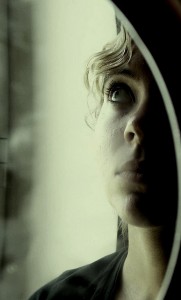 Mirror Moment: a moment in midpoint scene of a novel or screenplay when the character is forced to look within and reflect on who he is and who he must become in order to achieve his goal. If he decides to continue on as he always has, he will surely fail (tragedy).
Mirror Moment: a moment in midpoint scene of a novel or screenplay when the character is forced to look within and reflect on who he is and who he must become in order to achieve his goal. If he decides to continue on as he always has, he will surely fail (tragedy).
If the story is not a tragedy, the hero realizes he must either a) become stronger to overcome the odds or b) transform, shedding his biggest flaws and become more open-minded to new ideas and beliefs. One way or the other, he must better himself in some way to step onto the path which will lead to success.
Jim actually describes the Mirror Moment so much better than I can HERE, but do your writing a BIG FAVOR and also snag a copy of this book. (It’s a short read and will absolutely help you strengthen the character’s arc in your story!)
To see how the two tie together, let’s explore what leads to this essential “mirror moment.” Your hero is taking stock of his situation, realizing he has two choices: stubbornly continue on unchanged and hope for the best, or move forward differently, becoming something more.
The big question: what is the catalyst? What causes him to take stock of the situation? What causes his self-reflection?
The answer is not surprising: EMOTION. Something the character FEELS causes him to stop, look within, and make a choice.
Let’s assume this isn’t a tragedy. If this moment had a math formula, it would look something like this:
Emotion + look within = change
So what type of emotions are the best fit to encourage this necessary shift toward change? And are they positive emotions, or negative ones? Let’s experiment!
Common positive emotions, taken right from The Emotion Thesaurus:
Happiness + look within
Happiness is contentment, a feeling of extreme well being. If one feels good about themselves and where they are at, it doesn’t encourage a strong desire for change, does it?
Gratitude + a look within
 Gratitude is thankfulness, an appreciation for others and what one has. Because again, gratitude creates contentment, feeling “full” and thankful, it doesn’t make the best catalyst for change. However, if you were to pair it with something like relief (such as being given a second chance), then gratitude over being spared something negative could lead to resolving to change.
Gratitude is thankfulness, an appreciation for others and what one has. Because again, gratitude creates contentment, feeling “full” and thankful, it doesn’t make the best catalyst for change. However, if you were to pair it with something like relief (such as being given a second chance), then gratitude over being spared something negative could lead to resolving to change.
Excitement + a look within
Excitement is the feeling of being energized to the point one feels compelled to act. On the outside, this looks like a good candidate for change, but it depends on the type of excitement. Is the “high” a character feels something that distracts them from self reflection (such as being caught up in the experience of a rock concert) or does it inspire (such as the thrill of meeting one’s sports hero in person)? If one’s excitement propels one to want to become something better, then change can be achieved.
Satisfaction + a look within
Satisfaction is a feeling of contentment in a nutshell. It is feeling whole and complete. As such, looking within while satisfied likely won’t lead to a desire to change anything–in fact it might do just the opposite: encourage the character to remain the same.
Common negative emotions, again right from The Emotion Thesaurus:
Fear + a look within
Fear is the expectation of threat or danger. Feeling afraid is very uncomfortable, something almost all people wish to avoid. Some even try to make deals with the powers that be, so deep is their desperation: if I win this hand, I’ll give up gambling, I swear. So, combining this emotion with some self reflection could definitely create the desire to change.
Frustration + a look within
 Feeling stymied or hemmed in is something all people are familiar with and few can tolerate for long. By its very nature, frustration sends the brain on a search for change: how can I fix this? How can I become better/more skilled/adapt? How can I succeed?
Feeling stymied or hemmed in is something all people are familiar with and few can tolerate for long. By its very nature, frustration sends the brain on a search for change: how can I fix this? How can I become better/more skilled/adapt? How can I succeed?
Characters who are frustrated are eager to look within for answers.
Embarrassment + a look within
Embarrassment is another emotion that is very adept at making characters uncomfortable. Self-conscious discomfort is something all usually avoid because it triggers vulnerability. When one feels embarrassed, it is easy to look within and feel the desire to make a change so this experience is not repeated.
Shame + a look within
Disgrace isn’t pretty. When a person knows they have done something improper or dishonorable, it hurts. Shame creates the desire to rewind the clock so one can make a different choice or decision that does not lead to this same situation. It allows the character to focus on their shortcomings without rose-colored glasses, and fast tracks a deep need for change.
* ~ * ~ *
These are only a sampling of emotions, but the exercise above suggests it might be easier to bring about this mirror moment through negative emotions. But, does this mean all positive emotions don’t lead to change while all negative ones do? Not at all!
Love + a look within could create a desire to become more worthy in the eyes of loved ones. And emotions such as Denial or Contempt, while negative, both resist the idea of change. Denial + a look within, simply because one is not yet in a place where they can see truth. Contempt + a look within, because one is focused on the faults of others, not on one’s own possible shortcomings. Overall however, negative emotions seem to be the ones best suited to lead to that mirror moment and epiphany that one must change or become stronger and more skilled in order to succeed.
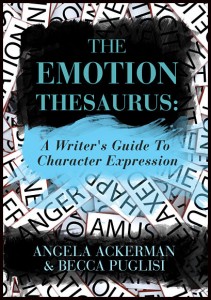 So there you have it–when you’re working on this critical moment in your story when your character realizes change is needed, think carefully about which emotion might best lead to this necessary internal reflection and change.
So there you have it–when you’re working on this critical moment in your story when your character realizes change is needed, think carefully about which emotion might best lead to this necessary internal reflection and change.
(And of course, we profile 75 emotions in The Emotion Thesaurus: a Writer’s Guide to Character Expression, so that’s just one more way for you to use it!)
The post Story Midpoint & Mirror Moment: Using Heroes’ Emotions To Transform Them appeared first on WRITERS HELPING WRITERS.
Characters are the heart of a novel, and within that heart is the Hero’s Inner Journey. The protagonist’s path is much like yours or mine–one that will (hopefully) bring him closer to lifelong happiness and fulfillment.
In real life, people strive to become something more, to be something better. But the wounds of the past never quite leave us. Old hurts, betrayals, and injustices stay in our memory. Worry that a bad experience could happen again causes us to hesitate, and sometimes readjust what we want, and what we’re willing to risk. In other words, fear gets in the way.
Wounds Change Everything
 Just like you or I, a hero has wounds, a trunk full of scars he lugs with him wherever he goes. And like us, his determination to not repeat a painful emotional experience carries the high cost of lessening his feelings of satisfaction and fulfillment.
Just like you or I, a hero has wounds, a trunk full of scars he lugs with him wherever he goes. And like us, his determination to not repeat a painful emotional experience carries the high cost of lessening his feelings of satisfaction and fulfillment.
Because wounds influence a protagonist’s behavior so deeply (to the point he will do almost anything to avoid feeling such pain again), it’s important to have a good grasp on what emotional trauma from his past is now shaping his present. Here are a few things to keep in mind.
Every Wound Contains a Lie
Emotional wounds are more than just painful memories. Inside each wound is a seed of doubt. Is this somehow my fault? Am I to blame? This doubt blossoms, eroding one’s self-worth.
When something bad happens, it’s human nature to try and rationalize it, make sense of it. We often blame ourselves, believing if we had chosen differently, done something else, there would be a better outcome. Most times there’s no logic to attributing a personal failure to what happened (especially when events were out of our control), but we do it anyway. Because of this internalization, a lie is born. We believe we are somehow deserving of this pain, or we become disillusioned in some way.
Let’s say a character discovers her husband plans to leave her for another woman (wound). Under all the anger and rage and heartache she would look within, to what she did wrong. The lie she might believe could be: He cheated because I am not worth loving. This lie burrows deep into her self-esteem and self-worth. Moving forward, she may avoid relationships because she believes this lie of being unworthy. Or, she may choose men who are likely to be unfaithful, because deep down she thinks these men are the only ones she deserves.
Wounds Cause Flaws To Form
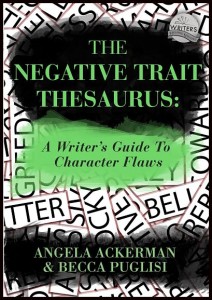 When a character is wounded, he straps on emotional armor to keep his feelings safe. Flaws develop, working under the ‘guise’ of protecting him from being hurt. For example, a female character who was mugged and sexually assaulted (wound) might develop flaws like mistrust, paranoia, and evasiveness to protect herself from being targeted again.
When a character is wounded, he straps on emotional armor to keep his feelings safe. Flaws develop, working under the ‘guise’ of protecting him from being hurt. For example, a female character who was mugged and sexually assaulted (wound) might develop flaws like mistrust, paranoia, and evasiveness to protect herself from being targeted again.
On the outside, these flaws “appear” to help her be safe, but they limit her instead, preventing her from building healthy relationships, hampering her spontaneity and placing a filter of distrust on all she sees. This in turn steals her her freedom, and puts a choke hold on self-growth and true happiness. (For more on flaws & their role in Character Arc, please reference The Negative Trait Thesaurus.)
Dig Into The Character’s Backstory
A character’s past will be a minefield of negative experiences, but at some point, there should be an event you as the author can define as “the wound.” Small, painful events change a person bit by bit, but to focus all this hurt and pain into a single backstory moment can really help you better understand who and what damaged your character, and why, as a result, they question their self-worth. This also guides you to the false belief they must see for the lie it is in order to become healthy and whole, strengthening them so they can achieve their goal.
To help you pinpoint what your character’s wound might be, here are some common “themes” that could be the root of this psychological damage.
7 Common Wound Themes:
A Physical Wound. A defect, scar or condition causes real life complication, doubt, low self-esteem and can make it difficult to feel like one fits in. Handicaps are real and can alter a character’s path, limiting them and hurting their confidence.
An Injustice. Being a victim of crime, witnessing a traumatic social injustice or living in a time period or reality that is unbalanced or full of corruption will all leave a mark.
Failure or Mistakes. People are naturally hard on themselves when things don’t happen as expected. The guilt associated with a failure or mistake (even if it is only a perceived failure) can paralyse a person, and send them on an alternative life path.
Misplaced Trust/Betrayal. Trusting or relying on someone and feeling let down in some way can cause deep hurt. This could be a parent/child dynamic, a friendship that goes sideways or even a deep betrayal of a loved one (infidelity, etc.)
Isolation. If the character felt left out or isolated in the past, it has lasting effects. Isolation might be relationship-related (a mother who favored a sibling over the protagonist), power imbalance (educational or social “status” barriers) or even simple economics (living in poverty, etc.) that restricted opportunity, achievement and fulfillment.
Neglect/Abandonment/Rejection. Some relationships are cardinal when it comes to care giving: a parent and child. Siblings. Partners in a marriage. And to a lesser degree, a citizen and his government, parishioner and his minister, or a doctor and his patient. When the person in the care giving role neglects or rejects the other party, this can cause deep feelings of abandonment to form.
Disillusionment. Believing one thing to be true and then discovering it is a lie can shake a character to their core. This might be a world views or political beliefs (discovering leaders that one has supported have been negligent or corrupt), a revelation in religious or spiritual beliefs, or uncovering immoral behavior. It could also be something closer and more intimate like a role model who was not who they pretended to be, or personal (like finding out one is adopted, for example.)
Do you know your character’s wound, and if so, does it fall under one of these themes?
PSSST! At 5:00PM Eastern you can find me at IndieRecon discussing 6 Smart Ways Authors Can Collaborate When Marketing.
The post Understanding Character Wounds: A List Of Common Themes appeared first on WRITERS HELPING WRITERS.
When focusing on character development, I think writers need to remember one important detail about main characters. They need to have…
FLAWS.
Yes. FLAWS! Our characters, especially our main character, need to be imperfect.
Having flaws does not equal being a bad main character. It simply means the character is “real”. The character is relatable. He (or she) is really relatable! 
I don’t want to read about characters that are perfect. I don’t think my kids do, either. Matter of fact, even watching the princess movies, (which they love), they are always rooting for her more when she makes a mistake (no matter how small) and has to find a way to fix it.
We all make mistakes and want reassurance that they can be “fixed”. We want to know there is a chance for redemption. And reading books with characters who go through the same process gives us hope!
Do your characters have flaws? And if you care to share, what are they?
One of my characters is brutally honest. Always. He doesn’t understand the problem with it. This flaw makes for interesting and sometimes hurtful situations.
How about the books you read – which are your fave characters? What are their flaws?
Filed under:
writing for children Tagged:
character flaws,
flaws,
perfect characters,
the craft of writing,
writing characters with flaws,
writing for children,
YA,
young adult flaws 








By:
Ken Baker,
on 8/17/2010
Blog:
Ken Baker: Children's Author
(
Login to Add to MyJacketFlap)
JacketFlap tags:
conflict,
emotions,
character,
perspective,
humanity,
depth,
inner self,
physical attributes,
outer self,
character qualities,
multi-dimensional,
flaws,
Add a tag
One of the ways of adding depth to your stories is to make sure your characters have depth. You need to go far beyond having a character with a basic set of emotions coupled with a physical description of the character.
Your character needs history. What has happened in her life to make her who she is? What’s her relationship with her parents, siblings, children, friends, bosses, teachers, and others?
No one is perfect, so your character needs flaws. How do these flaws play into the plot? Do they create additional conflict, internally or externally? Even if your antagonist is the most evil person in the world, your character needs some good qualities to show their humanity. Obviously, your protagonist needs good qualities too. Otherwise we won’t care what happens to her.
Your characters need to have inner conflicts that the people around them can’t see or don’t know about. Everyone puts on a front or a face that they show the world, which is different than how they view themselves. We need to see the discrepancies between the character’s inner self and the self they show the world. When we talk, we don’t always say what we mean—the same thing has to happen with your characters from time to time—where you know they’re thinking one thing, but saying something different. Once again it becomes the clash between the inner self and the outer self.
These are just a few things to watch out for when adding depth to your characters. Below are a few of my favorite books that provide even more valuable insights on creating characters with depth.
Characters and Viewpoint by Orson Scott Card - Provides invaluable perspectives on how to develop and use your characters to make your stories come alive.
The Comic Toolbox by John Vorhaus – While this book primarily focuses on how to add humor to your stories, it also covers many aspects of creating multi-dimensional characters in terms of their flaws, humanity, and unique perspective on the world.
Building Believable Characters by Marc McCutcheon - From listings of physical attributes to character actions and the way they dress, this is a good reference or resource book for helping you define the unique characteristics of your individual characters.















Hi Donna,
We all have flaws, even heroes. Unfortunately, writers sometimes make main characters too perfect to be believable. That turns off a reader. Hopefully, that’s just in the first rough draft or character sketch–the development of an ideal character. Sprinkle in some trouble and reaction to it and an editor may take notice.
Donna, good luck with your brutally honest character. I hope he is in print soon.
Linda A.
[...] This post was mentioned on Twitter by Donna Earnhardt, Donna Earnhardt. Donna Earnhardt said: Writing for children, teens and YA: Imperfect characters: http://wp.me/pAV71-vx [...]
I love Pippi Longstockings. She is quirky, spunky, messy and completely naive about social norms. It’s her naivete and the trouble that causes her that makes her endearing and we root for her to come out on top.
Linda – you’re right… sprinkling in trouble is KEY to a fun character. They need to have a problem to solve and most of the time, it needs to be THEIR problem.
K – Pippi! She reminds me of my Z. KNOw what I mean?